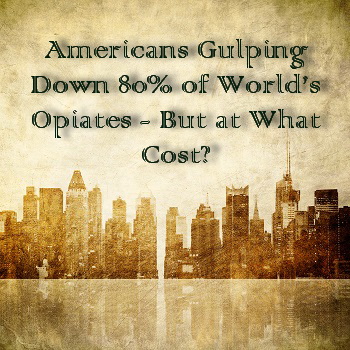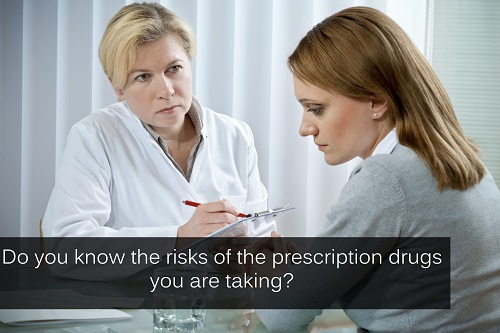Across the U.S., public school health classes and counselors continue to teach about the dangers of drugs like alcohol and cocaine. In the last few years, however, students have begun to learn about what public health officials are identifying as a much larger problem: prescription drugs.
Last year, the pharmaceutical industry released a statement saying that 4.02 billion prescriptions were written in the U.S. in 2011. This comes out to about 13 prescriptions for every American, an all-time record in the U.S. But are all these prescriptions fueling the current prescription drug addiction and overdose rates?
The Statistics
- U.S. doctors wrote 4.02 billion drug prescriptions in 2011.
- According to the CDC, nearly half of the U.S. population has taken at least one prescribed drug during the last month, and more than 20 percent of the U.S. population has taken three or more.
- More than 75 percent of doctor office visits involve prescription drugs.
- More Americans die from prescription overdose than from cocaine and heroin combined.
- Since 2008, more Americans die from prescription overdoses than from car accidents every year.
- In 2011, 16,500 Americans died from prescription painkillers alone.
- Since 2000, the number of prescription overdoses has more than doubled among men, and more than quadrupled among women.
- Americans consume 80 percent of opiate painkillers produced worldwide.
- An estimated 36 million “serious adverse reactions” to prescribed medications in the U.S. every year.
A Growing Epidemic
The dramatic rise of drug prescriptions written every year in the U.S. seems to mirror the alarming rise of prescription drug overdoses, and many experts, including doctors and public health officials, are looking at the issue more seriously. These drugs are very beneficial, but at what cost? Some of the more popular prescribed drugs happen to be some of the most familiar, appearing in magazine, radio and television ads across the country. A recent report released by a London medical journal states that for every $1 spent on researching a particular drug, an additional $19 is spent on promotion and marketing.
The Country’s Most Popular Prescribed Drugs
The numbers of prescriptions written have risen for many drugs across the board in the last decade, and certainly in the last several years. Note that many of the county’s best sellers are not often involved in many overdose deaths (with the exception of hydrocodone). As of 2010, the most popular prescribed medications include:
- Hydrocodone (opiate combined with acetaminophen/Tylenol): pain reliever
- Zocor: drug treating high cholesterol
- Lisinopril: drug treating blood-pressure
- Synthroid: synthetic thyroid hormone
- Norvasc: drug treating blood-pressure
In 2011, the figures changed somewhat, with the anti-depressant Zoloft taking the top slot, followed by the cholesterol medication Lipitor. Sales of drugs treating attention-deficit hyperactivity disorder also jumped, rising 17 percent from 2010.
Most Dangerous Prescribed Drugs
As fatal prescription drug overdoses continue to climb, scientists have been focusing their research on the main drivers behind the epidemic, trying to find which drugs are most likely to cause harm. Opiate painkillers, with their powerful addictive and sedative properties, continue to top the charts and include popular painkillers like OxyContin, Hydrocodone and Vicodin. However, doctors have been aware for some time that taking multiple prescription medications heightens the risk of an overdose.
Medical News Today, for example, reports that many reported fatal overdoses have involved multiple prescription drugs or alcohol. A group of anti-depressants known as benzodiazepines (which includes brand names such as Xanax, Valium and Ativan) seem to be a major contributor, and are involved in about 30 percent of opiate painkiller deaths. This is the first study to point toward a particular group of medications as a dangerous combination with opiates. The danger of alcohol in conjunction with opiates, however, is very well documented.
Of all prescription overdose deaths in the U.S., the ones most commonly involved, alone or in combination with others, are listed below:
- Opioid painkillers: found in about 75 percent of overdoses
- Benzodiazepines: found in about 30 percent of overdoses
- Anti-depressants: found in about 17 percent of overdoses
- Drugs for epilepsy and Parkinson’s: found in about 8 percent of overdoses
The Industry’s Response
The pharmaceutical industry greeted the latest numbers on written prescriptions with enthusiasm. After all, it’s a sign that the industry is growing. When confronted about the alarming rise in prescription drug deaths, manufacturers like Purdue have so far responded with statements about their labeling practices and commitment to working with government officials.
Medical News Today has pointed to unethical online pharmacies as part of the problem. It’s true that recent studies show a link between Internet access and an increase in prescription drug abuse, but doctors are still wary, stating that more studies need to be done. Most likely, online pharmacies (like some corrupt pharmacies elsewhere) comprise just one of many venues that addicts use to get their drug of choice.
Perhaps simply stating that patients and doctors need better communication, or that patients need to read labels more carefully, isn’t enough to combat the problem. After all, Americans consume 80 percent of the world’s supply of opiate medication every year—does this really mean Americans are in more pain than everyone else, or is this a reflection of a broader problem? Whether or not the pharmaceutical industry has any responsibility in the rise of overdose deaths, the problem remains and affects everyone, from preteens to the elderly. Unlike the scary drugs we all learned about in school, these drugs are used and abused by almost every demographic. Complicating the issue even further, these same drugs also help save and improve lives. The question now should be: how do we lower abuse and fatality rates of prescription drugs without restricting access to the patients who really need them? It really is a tough question to answer.
Prescription drug addiction—especially to opiate painkiller medicines like fentanyl—is killing Americans in alarming numbers. In 2010, more than 12 million Americans reported using a prescription painkiller non-medically, and the rates of overdose deaths have more than tripled since 1990. Painkillers are responsible for more deaths than heroin and cocaine combined—so the legitimately prescribed medicines sitting in your cabinet currently pose a bigger public health risk than the illicit narcotics found on street corners.
Since drug addiction is a disease that does significant damage to the health and lives of those affected, many people would like to believe that their insurance provider will look out for them if they spiral into self-destruction. A new report reveals, however, that this is far from the truth. In reality, insurers place numerous restrictions on those seeking medicines that have been shown to help people struggling with opiate addiction.
The Epidemic of Prescription Painkiller Abuse
More and more people are becoming aware of the risks of prescription painkiller abuse, but the death rates still paint a shocking picture of the state of pain management in the U.S. The main issue is that we’re still dependent on opiate medicines (which bear close chemical similarities to illicit drugs such as heroin) and these have a significant risk of addiction and also a notable potential for overdose. Taking too much of a prescription painkiller can produce euphoria. As a result, many people who are prescribed these medication s find themselves regularly exceeding the recommended dosage from their doctor. According to the CDC, sales of prescription painkillers like Vicodin, OxyContin, Percocet and Duragesic have increased by 300 percent since 1999, providing a startling parallel to the rates of overdose death.
s find themselves regularly exceeding the recommended dosage from their doctor. According to the CDC, sales of prescription painkillers like Vicodin, OxyContin, Percocet and Duragesic have increased by 300 percent since 1999, providing a startling parallel to the rates of overdose death.
The key point is that drug addiction is a chronic, relapsing disease just like asthma and diabetes, and users (while they may have chosen to take the substance initially) quickly lose control over their behavior and are unable to stop taking the drugs. Their brains have adjusted to the continuous supply of opiates, so that without them they’re left unbalanced and can experience unpleasant withdrawal symptoms. This means that patients experiencing chronic pain are given medicines that can easily lead them into addiction—even if they have a legitimate reason for taking large doses of the medicine. Just like asthmatics can’t choose to re-open their airways and diabetics can’t increase their insulin levels through sheer willpower, those struggling with addiction can’t just stop craving drugs.
Treatment Is Available
This is why, alongside psychological interventions, drugs such as methadone, buprenorphine and naloxone have been developed to help people struggling with opiate addictions. While methadone and buprenorphine are used to help users gradually decrease their opiate consumption, naloxone is used specifically to counter the effects of an overdose. The key point here is that medicine that could help with the epidemic is available; it isn’t that the medicine doesn’t work or hasn’t been invented.
Insurer Restrictions
It is clear that while opiate painkiller abuse is one of the most significant causes of death in the U.S. today, a mixture of psychological and pharmacological interventions can be used to treat anybody affected. The only problem is that they often aren’t being used and the paper from the Avisa Group—which was commissioned by the American Society of Addiction Medicine—reveals the reasons in undeniable detail.
Firstly, it shows that rural or especially poor areas have higher rates of overdose from prescription medicines, and that Medicaid users are also at an increased risk. The Affordable Care Act, due to come into effect in January, will dramatically increase the numbers of drug-addicted Americans enrolled with Medicaid and other health insurance plans. This sounds like a good thing, but the benefits are limited when you consider the wide range of restrictions placed by providers on the users of medicines like methadone, buprenorphine and naloxone.
The list of restrictions is unfortunately long and inevitably causes a great deal of harm by making it harder to access potentially life-saving medicines. Some medicines aren’t covered by specific insurers or state Medicaid programs, there are limits on the dosages allowed (which don’t always allow for the recommended dosage of the medicine), unrealistic limits on refills and limits on the amount of medicines such as buprenorphine and methadone that you can be prescribed over the course of your lifetime (which are unheard of for other medicines).
Perhaps most shockingly, the insurance companies require authorization and re-authorization processes to be completed, which become more complex the more times a patient has to complete them. These include things like the requirement of counseling before authorization is granted, and this often also involves the insurance companies demanding the counselor’s treatment notes and the patient’s attendance records before making a decision. In many cases, cheaper treatments (which are considerably less likely to be effective) must be tried before authorization is granted, and the entire process can take several days or even weeks. During this time, it’s inevitable that some drug abusers relapse, overdose and die as a result.
Still Fighting Stigma?
The fact that such restrictions don’t exist for other medicines is the worst point revealed by this report, because it essentially shows that addiction is still being stigmatized. How you can morally justify imposing a lifetime restriction on treatment for somebody suffering from a chronic condition is completely beyond comprehension. Nobody would tell a diabetic that they’ve used up their lifetime supply of insulin, yet it’s commonplace for drug users to be told the equivalent. It reflects a deep-seated assumption that drug addiction is somehow a “choice,” and this assumption must be shattered if we’re ever to reduce the public health impact of prescription painkiller addiction.
The prescription drug abuse epidemic is an ongoing battle. Community awareness endeavors encouraged moms and dads to be more aware of the prescription drugs in family cupboards and to secure or remove those drugs. There have been prescription drug turn-in days to help parents responsibly dispose of unused prescriptions. Federal agents have been successful in closing down local pill mills and prosecuting complicit pharmacies here in America. But that does not mean that the supply line for illicit prescription drugs has been shut down. Overseas Internet pharmacies are only too happy to take up the slack.
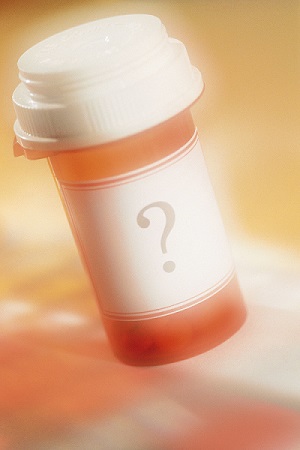 A watchdog group called Digital Citizens Alliance engaged the help of a 15-year-old boy to document the ease with which kids can order prescription drugs from abroad. The group videotaped the young boy calling an overseas pharmacy and ordering the prescription painkiller Percocet without a doctor’s prescription. During a second recorded call, this time asking for Hydrocodone, the boy confessed his age and mentioned that he was using his parent’s credit card to pay for the drug. The person at the other end of the call ignored the boy’s age and the lack of doctor prescription and merely asked for more credit card information.
A watchdog group called Digital Citizens Alliance engaged the help of a 15-year-old boy to document the ease with which kids can order prescription drugs from abroad. The group videotaped the young boy calling an overseas pharmacy and ordering the prescription painkiller Percocet without a doctor’s prescription. During a second recorded call, this time asking for Hydrocodone, the boy confessed his age and mentioned that he was using his parent’s credit card to pay for the drug. The person at the other end of the call ignored the boy’s age and the lack of doctor prescription and merely asked for more credit card information.
The group tested the drugs received through phone ordering. In some cases, the drug was exactly what it claimed to be, but in other cases, it was not. Orders for codeine from Pakistan delivered via India proved to be the real deal, but another order for Hydrocodone proved false. This demonstrates several of the problems with online pharmacies. They are difficult to track down and not reliable in terms of drug authenticity.
A second group called LegitScript spent five years investigating online pharmacies for the president. That group says that 97 percent of Internet pharmacies are not on the up and up and only rarely ask for a doctor’s prescription. In most cases, all a buyer is required to do is to fill out an online form. And, if you don’t have mom or dad’s credit card, no problem; Western Union works just as well.
There are more than 40,000 of these kinds of pharmacies. They pop up and disappear quickly. They sell to anyone who can show them the money. These overseas drug vendors have created a never-ending battle for law enforcement who can’t possibly track down every one of them. Prosecution is also difficult since there is another government involved.
Teens may not be raiding the family medicine chest, but they have found another way to get illicit prescription drugs. Parents need to educate teens about another reality however. It is illegal to sell drugs without a prescription and it is illegal to purchase them without a prescription too.
There is little argument that America is in the midst of an opioid epidemic, but health officials will argue about how to solve the problem.
Scientific articles published recently in the same journal represent ideas that conflict. The Annals of Internal Medicine, a publication established in 1927 by the American College of Physicians, published two articles on the subject of restriction prescription in hospital emergency departments. The issue revolves around the current guidelines for how much pain medication should be kept in the pharmaceutical areas of emergency departments. One side of the debate says that the current regulation of a three-day supply is not enough for the average emergency department. The other side of the debate says the limited supply will force doctors to make wiser choices in who gets what pain medicine.
Prescription Drug Abuse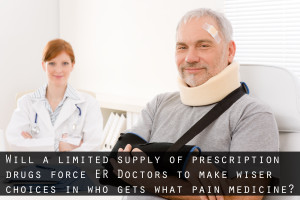
New York City made headlines earlier this year when city officials announced that the most powerful and common painkillers on the market today would be restricted in the city’s 11 public hospitals. The move was in response to the abuse of painkillers that has gripped the city. These painkillers include Vicodin, OxyContin and Percocet. Methadone and Fentanyl are no longer distributed in the public hospitals. Those in favor of the restrictions note that there has been a rapid increase in opioid analgesic consequences and that restricting the medications in question will help doctors provide safer care for their patients who are experiencing issues with pain.
Many Americans now have an expectation that a visit to the emergency room will result in acquiring pain medication. Some emergency department personnel agree that something has to be done about that perception, which is bolstered by doctors that could perhaps be less willing to doll out the drugs to patients in pain. Non-narcotic medications are now beginning to find their way into emergency departments, as are pain meds that are engineered to be less addictive.
29 Apr 2013
Prescription Opioid Abuse and Risks for Suicide
Prescription opioids are a group of medications commonly used to treat forms of pain that don’t respond to other types of medication-based treatment. Because of certain changes they make in normal brain function, these medications present a very real risk for both abusive patterns of use and drug addiction; in turn, both prescription opioid abuse and prescription opioid addiction create increased risks for suicidal thinking and active suicide attempts. According to research findings reported in 2012, elevated suicide-related risks commonly remain in long-term opioid abusers and addicts even when they discontinue drug use.
Prescription Opioid Basics
All prescription opioids are based on substances that occur naturally in Papaver somniferum, a plant species popularly known as the opium poppy. Two of these medications, morphine and codeine, come more or less directly from ingredients contained in the sap of P. somniferum. Two other common prescription opioids, hydrocodone (Vicodin, Lortab), and oxycodone (OxyContin), are created in pharmaceutical laboratories through chemical manipulation of naturally occurring opioid substances. Three additional common opioid medications—fentanyl (Fentora, Actiq), synthetic codeine, and meperidine (Demerol)—are manmade substances designed to chemically resemble the natural opioids.
Each prescription opioid medication has its specific typical role in medical treatment. For instance, doctors typically use codeine to relieve relatively moderate pain or ease the effects of medically serious coughing or diarrhea. Morphine is commonly used to relieve severe pain in surgical settings, while doctors use hydrocodone and oxycodone for a range of conditions involving moderate to severe pain. Regardless of their particular common use, all prescription opioids (and illegal opioid drugs) achieve their pain-relieving effects in a similar way by entering the body and attaching themselves to sites in the nervous system called opioid receptors. When activated by the presence of opioids, these receptors help override pain signals traveling through the nervous system to the brain.
When opioids attach themselves to opioid receptors located in the brain, they produce an additional effect by triggering a dramatic increase in the levels of a brain chemical called dopamine; in turn, this dopamine increase produces intense pleasure. In prescription users, opioid abuse and addiction typically become issues when a given individual seeks out this pleasure as a recreational activity and increases his or her level of intake above the level sanctioned by a doctor. This situation differs fundamentally from the situation of prescription users who follow their doctors’ orders and come to depend upon opioids’ legitimate pain-relieving effects.
Suicide-Related Risks
Unfortunately, suicidal thinking and active suicide attempts are found among prescription opioid abusers and addicts with some regularity. In 2012, researchers from the American Psychiatric Institute for Research and Education examined suicide-related factors in almost 38,000 participants in a study called the 2009 National Survey on Drug Use and Health, which was conducted by the U.S. government’s Substance Abuse and Mental Health Services Administration.
These researchers found that about 15 percent of the survey respondents had misused a prescription opioid medication at least once. They also found that roughly 11 percent of all people who had misused prescription opioids for at least two years had considered suicide in the year before the survey. In addition, roughly 9 percent of all people who had misused these medications for less than a year had considered suicide during the same period of time. By comparison, only 3 percent of people who didn’t use prescription opioids considered suicide in the year before the survey.
The authors of the American Psychiatric Institute for Research and Education’s study noted several factors that help determine the risks for suicidal thinking in people who misuse prescription opioids. The most prominent factor is a level of misuse that qualifies for standard definitions of drug abuse or drug addiction; fully 23 percent of survey participants with suicidal thoughts self-reported this degree of medication misuse. Another important factor is the presence of symptoms consistent with a diagnosis of the psychiatric disorder known as major depression. In addition, the authors of the study concluded that the risks for suicidal thinking don’t end with the discontinuation of opioid use, and former long-term users continued to exhibit suicidal thought patterns significantly more frequently than people who have never used prescription opioids.
About 18 percent of all current prescription opioid users/abusers who considered suicide actually went on to make active suicide attempts, while 7 percent of former users/abusers with suicidal thoughts attempted suicide. By comparison, 11 percent of survey participants with suicidal thoughts who never used a prescription opioid attempted to kill themselves.
29 Apr 2013
Doctors Abusing Prescription Medication
According to Consumer Watchdog, one in 10 physicians abuse prescription medicines at some point in their career, and still continue to practice medicine. The situation is reminiscent of the TV series “House M.D.,” which features a Vicodin-addict doctor continuing to practice medicine despite his friends and colleagues being well-aware of his problem. Unfortunately, unlike the fictional Dr. House, most real doctors have a more hands-on role and don’t have borderline superhuman intelligence to fall back on, and therefore put themselves and their patients at considerable risk. You might be more familiar with the issue through prime TV programming, but it’s a real issue that requires immediate management.
Are Doctors More Likely to Abuse Prescription Medicines?
Although the rates of illicit drug use among practicing physicians is lower than in the general population, research has shown that prescription medicine abuse is five times more likely in doctors. Prescription drug abuse is currently at epidemic levels in the U.S., causing more overdose deaths than heroin and cocaine combined, and doctors are overrepresented in the population of people abusing the drug. This is often allowed to continue without the doctors losing their medical licenses, in some cases even after multiple disciplinary hearings.
What are the Potential Causes?
It’s easy to see that a big part of this is likely to be related to doctors’ increased access to potentially addictive substances. This is shown by the fact that anesthesiologists (doctors who have wide access to substances such as opioids) are generally more likely to abuse prescription drugs than doctors in other specialties. Simply, the fact that they are more closely connected with potentially dangerous substances makes them more likely to take them and become addicted. However, it’s clear that this isn’t the whole picture, because oncologists, for example, have low rates of substance abuse but high level of access to potentially addictive substances.
The other major component of the problem is that many doctors are able to continue practicing even if they have a recognized issue. In addition to the lack of preventive action being taken as part of disciplinary proceedings, most hospitals don’t routinely test doctors for drugs, which means that the problem is likely to continue unchecked for longer. There is also a suggestion that doctors would rather speak to their colleagues personally rather than taking the issue to the proper disciplinary channel, particularly if their punishment is likely to be severe.
Doctors’ lives are also inherently stressful, and since stress management issues are one of the most common reasons people take drugs, this evidently has some part to play in the issue. In combination with easy access to drugs and a supposed understanding of the risks, doctors under stress are believed to be more likely to turn to prescription medicines.
What Can Be Done?
Doctors appear to be at increased risk of developing a prescription medication addiction, but they respond to treatment like any other substance abusers. Of the approaches that have been shown to be effective are Physician Health Programs, with 78 percent of physicians enrolled in one over the course of a five-year period remaining drug-free at every scheduled test. Other studies have shown that 91 percent of physicians enrolled in the programs achieved a positive treatment outcome.
Education about the risks of substance abuse is also essential. While doctors know about the potential risks of medicines like OxyContin, they may incorrectly believe they can keep them under control and use the drug safely. Ensuring that doctors, patients and anybody with access to potentially harmful medicines understands the risks of addiction to prescription medicines is essential to resolving the issue.
It’s also possible that stricter regulations regarding physician substance abuse could be a valuable approach in reducing its prevalence. Such a low proportion of doctors are regularly tested for drugs that the problem is allowed to continue bubbling away beneath the surface. Other doctors who have colleagues abusing substances are often reluctant to report it and believe that the individual’s ability to do the job isn’t impaired. While it’s inevitably difficult to potentially damage a friend’s career, the harm that could be done to a patient as a result should be the main factor they consider.
Conclusion
Doctors do have higher rates of prescription medication abuse than the majority of the population, but it’s important to remember that it’s still an issue for the population as a whole. Being relaxed about a friend, colleague or loved one’s addiction because it happens to be to a legal substance is potentially dangerous, particularly if he or she could seriously harm someone else as a result. With proper treatment and education, however, addicted individuals can be rehabilitated and new cases of addiction can be prevented.
15 Apr 2013
Five Commonly Abused OTC Medications
Say substance abuse and many people immediately think of illicit drugs like cocaine or heroin. With increasing media attention on the rise of prescription abuse, medications like oxycodone, Xanax, or the ADHD drug Ritalin may also come to mind. These aren’t the only types of drugs with the potential for abuse, though.
Easily obtainable drugs from the aisles of your local grocery store are also substances of abuse in the wrong hands. These drugs aren’t illegal, and they don’t require a prescription. They’re commonly referred to as “over-the-counter” (OTC) medications, and include common remedies like allergy medications, cough syrup and sleep aids. When taken in higher amounts or more frequently than the recommended dosage, they can lead to dependence and addiction –and the need for drug rehab treatment.
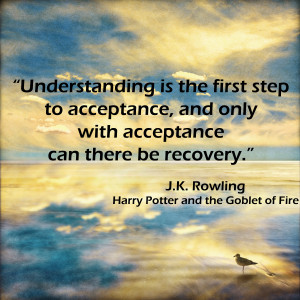 Allergy Medicines
Allergy Medicines
Histamine is a natural substance that’s released when your body is exposed to allergens or some viral infections. It’s responsible for itching, sneezing, and mucus production. Antihistamines are medications used to combat these uncomfortable symptoms. Some antihistamines can be easily abused, such as diphenhydramine. This is the ingredient found in allergy medicines such as Benadryl.
Taking high doses of antihistamines can cause a “high.” Symptoms may include euphoria, drowsiness, delirium and auditory or visual hallucinations. The side effects of abuse cover a range of physical symptoms, such as sleepiness, dizziness, nausea, low blood pressure and increased heart rate.
Antihistamines don’t typically cause physical dependence. However, for some, they can create a psychological one. An addiction counselor can work with you to develop strategies for overcoming dependence on these drugs.
Cough Medicines
Dextromethorphan is a cough suppressant found in many over-the-counter cough and cold medications. Also called DXM, the ingredient is found in many familiar brand names, including Sudafed, Robitussin DM, Dayquil LiquiCaps and Vicks NyQuil. While safe when used within recommended doses, this substance is often abused by teenagers. One survey of more than 54,000 teen students suggests up to 10% have abused OTC drugs, like DXM. In high doses, a person experiences effects ranging from mild perceptual distortions to hallucinations. Some people also experience feelings of paranoia and panic.
High doses of DXM trigger serious side effects. These may include confusion, slurred speech, dizziness, double or blurred vision, loss of coordination, nausea, vomiting and abdominal pain. Chronic, heavy abuse may lead to brain damage. NMDA receptor antagonist neurotoxicity – also known as Olney’s lesions – may develop, impacting the person’s emotions, learning, and memory. DXM also interacts with other medications, including antidepressants like selective serotonin reuptake inhibitors (SSRIs) and serotonin norepinephrine reuptake inhibitors (SNRIs).
Abuse can lead to an addiction that requires drug rehab treatment. Therapy typically involves psychological counseling. Cognitive behavioral therapy (CBT) is often used to help the addict identify the reasons they rely on the drug and to help develop healthier coping strategies. Since DXM use in teens is often social, the therapist may also use role-playing to help adolescents practice responses to peer pressure situations.
Motion Sickness Aids
When the nausea and dizziness of motion sickness strikes, many people reach for over-the-counter drugs such as dimenhydrinate. This drug is often referred to by the brand name Dramamine. While it can be effective when taken appropriately, high doses of dimenhydrinate can produce hallucinations and euphoria. Other side effects of a dimenhydrinate high include heaviness in the legs, loss of coordination, irregular heartbeat, temporary memory loss and mild to intense paranoia. An overdose can trigger a heart attack and may even result in death.
If you suspect that you may be abusing Dramamine, consult an addiction specialist as soon as possible to develop a treatment strategy to help you overcome the problem.
Sleep Aids
Over-the-counter sleep aids are intended to be taken for two or three nights at a time; they’re not intended for long-term use. Yet many people battling insomnia take sleep aids in higher doses and for longer periods than recommended.
The active ingredient in many sleeping pills is an antihistamine, typically either doxylamine or diphenhydramine (the same substance found in Benadryl). With prolonged use, it’s possible to develop a tolerance for these types of sleep aids. When this occurs, you’ll find that you need to take increasingly larger doses to feel its effects. Sleep aid abuse can also cause dependence. This creates a vicious cycle because you won’t be able to sleep unless you take the drug.
In addition to tolerance and dependence, sleep aids have side effects that range from mild to serious. These may include next-day drowsiness, dizziness, forgetfulness, constipation and urinary retention. Some people also report feeling clumsy or off-balance.
A few OTC sleep aids, such as NyQuil, contain alcohol as well. This can be particularly problematic for anyone recovering from alcoholism. OTC sleep aids are also potentially dangerous because they interact with other medications, including antidepressants and drugs taken to treat Parkinson’s disease.
Over-the-counter sleep aids generally don’t require professional drug rehab treatment. However, if you’re taking these OTC drugs in higher than recommended doses, or if you take them every night, talk with your primary care physician about finding safer alternatives for overcoming insomnia.
Diet Aids
The quest to shed weight leads many people to turn to diet pills and liquids. For some, however, that use quickly turns into abuse. A person might start taking the recommended dose, only to raise the frequency and dosage to achieve faster results. These drugs are often abused by individuals who struggle with anorexia or bulimia.
Diet supplements rely on a blend of ingredients to suppress appetite, decrease fat absorption or increase calorie burn. Some contain herbal ingredients that are not monitored by the FDA. Complications from the abuse of diet pills include heart palpitations, menstrual irregularities, vomiting, anxiety, kidney failure, cardiac arrest and death.
Diet aid abuse sometimes involves laxatives. Laxatives work by stimulating the bowels. They are a frequent drug of abuse for individuals with eating disorders. Someone trying to lose weight might use laxatives to purge food from their bodies, especially after a binge. Over time, abuse can make it impossible for the bowels to work without the aid of laxatives.
This type of substance abuse often requires drug rehab treatment. Since diet aid abuse can be rooted in mental health conditions like depression or an eating disorder; successful treatment should include a thorough psychological evaluation to assess underlying triggers.
Because these drugs can have a serious impact on the digestive system and other core bodily functions, hospitalization may be required to stabilize the addict’s physical condition. Since diet pills are not regulated by the FDA and manufacturers aren’t required to list ingredients, complications may occur while treating the addiction.
Once the person is physically stabilized, treatment can begin. An addiction specialist or mental health professional may recommend a treatment protocol that includes a combination of individual or family counseling, group therapy sessions and nutritional counseling.
Just because a medication is available at the local drug store doesn’t mean it’s harmless. Teenagers and adults alike turn to OTC medications to get high. Others end up abusing them in a desperate attempt to lose weight or get a better night’s sleep. Don’t hesitate to consult with your primary care physician, a mental health professional, or a drug rehab treatment counselor if you suspect that you or a loved one is abusing a seemingly innocent over-the-counter substance. They will help you find the best treatment to help you or your family member live a healthier, addiction-free life.
02 Mar 2013
Anabolic Steroid Abuse
Anabolic steroids are a group of synthetic substances that closely mimic the chemical structure of testosterone, the hormone produced in the bodies of both males and females after puberty. In legitimate medical settings, doctors use these substances to correct the effects of unusually low natural testosterone production, as well as the effects of aplastic anemia and other related ailments that reduce the oxygen content in blood. Professional and recreational athletes also sometimes abuse anabolic steroids in an attempt to improve their athletic performances or hasten their recovery from various injuries or routine exertion. Anabolic steroid abuse is both illegal and potentially addictive. In addition, steroid abusers can develop a number of serious side effects, or even die as a result of their steroid use.


